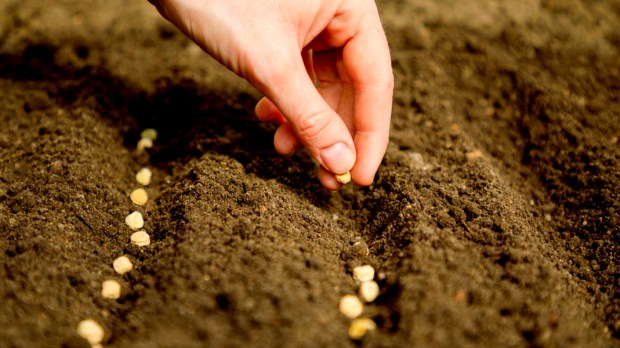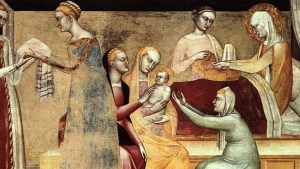On September 8 the Catholic Church celebrates the Nativity of the Blessed Virgin Mary. In context, the date is exactly nine months after the solemnity of the Immaculate Conception. Connected with this particular feast is an ancient “blessing of seeds” that has taken place on this day for hundreds of years.
Farmers and other parishioners would arrive at Mass with their seeds or seedlings and the priest would bless them afterwards. It is a custom that takes as its biblical basis the command of God given to Moses, “Tell the children of Israel that when they enter the land of promise which I shall give them, they are to offer the first-fruits to the priests, and they shall be blessed.”
The traditional text of the blessing can be found in the Roman Ritual.
Holy Lord and Father, almighty everlasting God, we ask and beseech you to look with merry countenance and fair eyes on these seeds and seedlings. And as you proclaimed to Moses, your servant, in the land of Egypt, saying: “Tell the children of Israel that when they enter the land of promise which I shall give them, they are to offer the first-fruits to the priests, and they shall be blessed”; so too at our request, O Lord, be merciful and pour out the blessing + of your right hand upon these seeds, which you in your benevolence bring forth to sustain life. Let neither drought nor flood destroy them, but keep them unharmed until they reach their full growth and produce an abundant harvest for the service of body and soul. We ask this of you who live and reign in perfect Trinity forever and ever.
Almighty everlasting God, sower and tiller of the heavenly word, who cultivate the field of our hearts with heavenly tools, hear our prayers and pour out abundant blessings upon the fields in which these seeds are to be sown. By your protecting hand turn away the fury of the elements, so that this entire fruit may be filled with your blessing, + and may be gathered unharmed and stored up in the granary; through Christ our Lord.
The annual blessing of seeds on the Nativity of the Blessed Virgin Mary was a way for farmers to mark the closing of the summer harvest and the beginning of fall and winter planting. Before they engaged in such an endeavor, they sought the blessing of the priest to bring God’s protection on their actions. It was a way to recognize the power God has over creation and to place the following year’s growing season into his hands.
In addition to being a day where farmers recognized the role of God in protecting their livelihood, farmers sought God’s help through the intercession of the Blessed Virgin. As Eve was known as the “Mother of all the Living,” Mary being the “New Eve” has been given the title of “Mother and Queen of All Creation.”
Pope Francis even highlighted this particular role of Mary in his encyclical Laudato Si’.
Mary, the Mother who cared for Jesus, now cares with maternal affection and pain for this wounded world. Just as her pierced heart mourned the death of Jesus, so now she grieves for the sufferings of the crucified poor and for the creatures of this world laid waste by human power. Completely transfigured, she now lives with Jesus, and all creatures sing of her fairness. She is the Woman, ‘clothed in the sun, with the moon under her feet, and on her head a crown of twelve stars’ (Rev 12:1). Carried up into heaven, she is the Mother and Queen of all creation. In her glorified body, together with the Risen Christ, part of creation has reached the fullness of its beauty. She treasures the entire life of Jesus in her heart (cf. Lk 2:19,51), and now understands the meaning of all things. Hence, we can ask her to enable us to look at this world with eyes of wisdom.
This blessing has received even more relevance with the recent celebration of the “World Day of Prayer for the Care of Creation” that Pope Francis established in the Roman Catholic Church on September 1.
In the end, the blessing of seeds is a way to recognize God as the one from whom all blessings flow and to ask for his assistance and protection through the motherly care of the Blessed Virgin Mary. It is not meant to be a superstitious sacrifice to an unknown god, but a way to entrust everything (even our seeds and seedlings) to the Lord of All Creation, who watches over us and provides for our every need as a loving Father.


